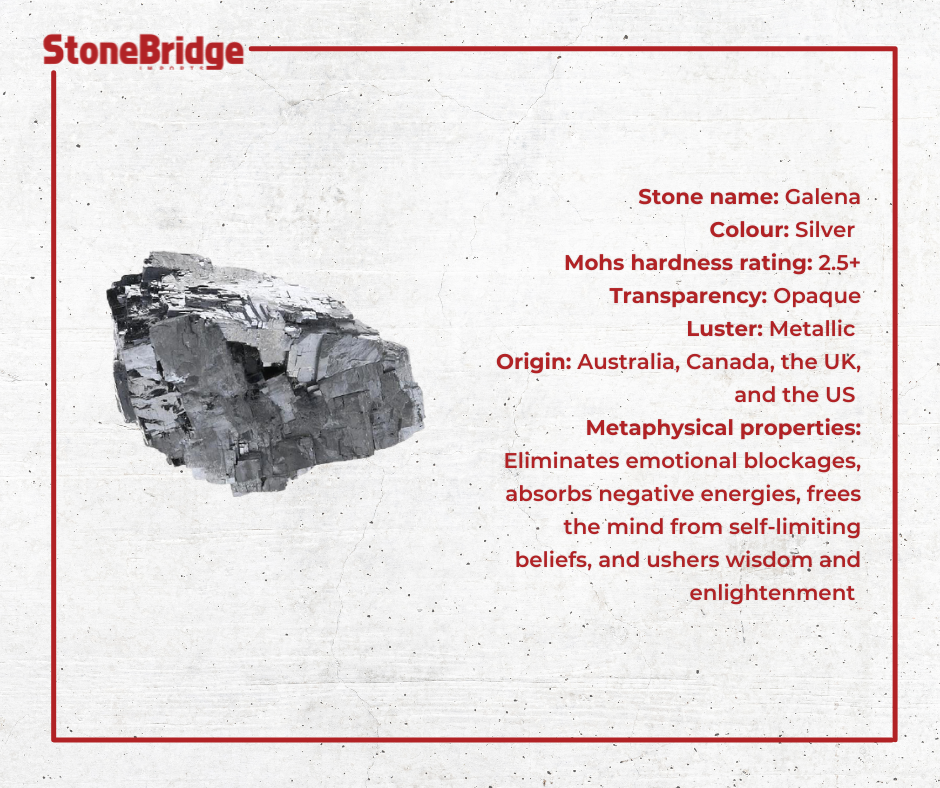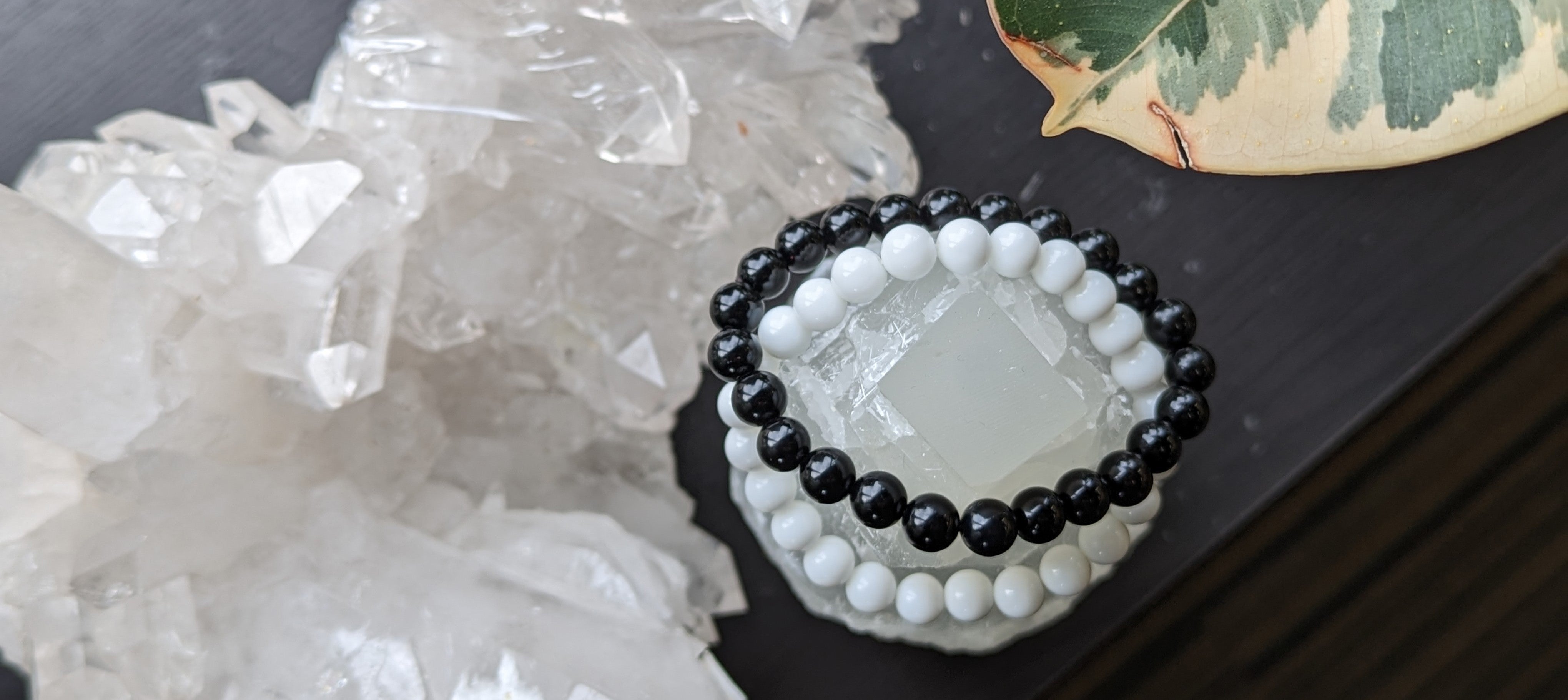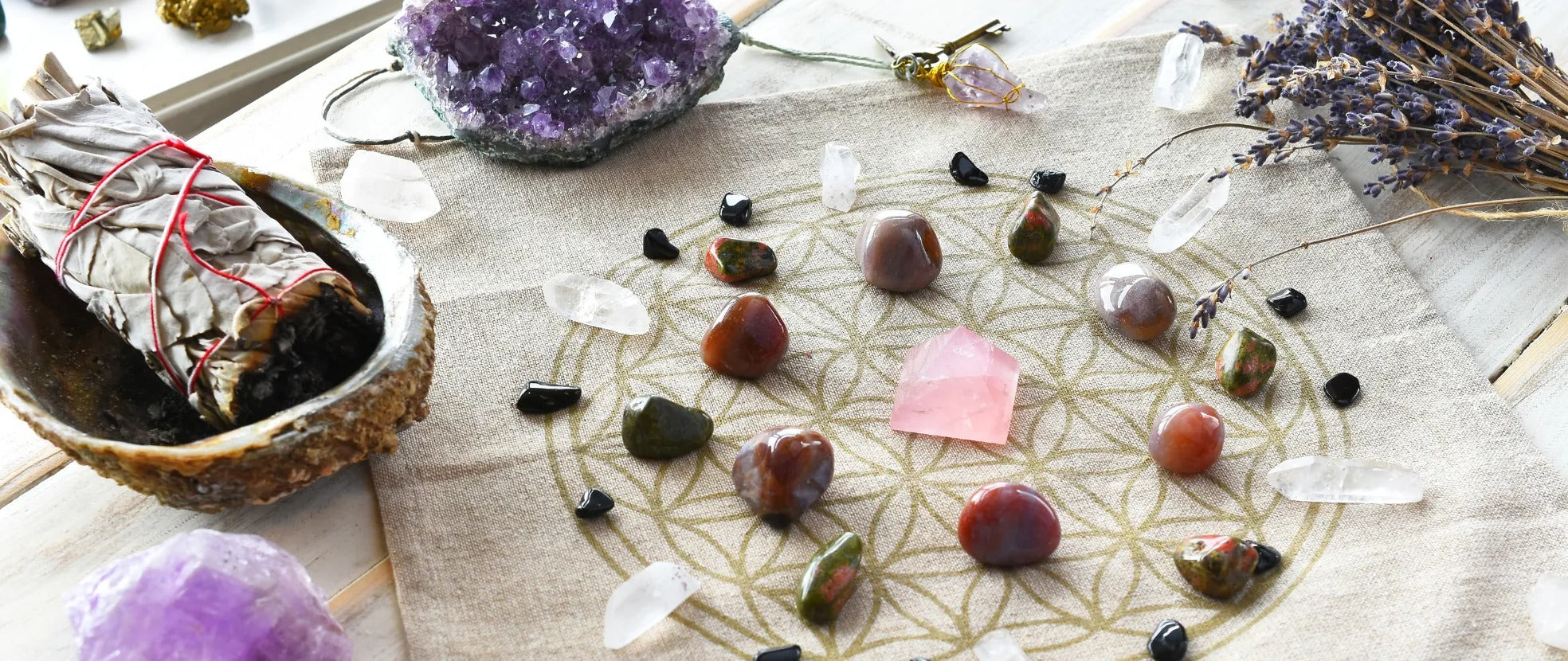Galena is one of the stones that serve an important purpose (industrially and metaphysically) in society. It's as old as the time humans learned to extract lead and silver from ores, which is thousands of years old! Galena is also used for healing and stabilizing energies.
Read on to know more about this mineral.
Physical Properties of Galena
Galena is a lead sulfide (PbS) mineral. It is considered as the primary ore of lead and an essential source of silver. The mineral is easy to identify due to its distinct silver colour and metallic luster. Galena is a soft mineral with a Mohs hardness of 2.5+.
It displays a perfect cleavage and a sub-conchoidal fracture when cut. It has an isometric or cubic crystal system. When freshly extracted, Galena crystals look astonishing in their bright silver appearance. But they tarnish to gray when exposed to air.
Galena typically consists of about 86.6% lead and 13.4% sulfur, but some specimens may contain certain amounts of silver. Traces of silver content can alter its crystal structure, producing curved cleavages in the mineral. Galena melts easily when placed in fire. After smelting, its lead content settles below the ashes when the fire burns out.
Finest Galena specimens are found in Australia, Canada, the UK, and the US.
History of Galena
The mineral was named in 77 A.D. by naturalist and philosopher Pliny the Elder. He derived the name ˜Galena' from the Greek word galene which means ˜lead ore,' referring to the mineral being an important source of lead.
In ancient times, Galena was mainly found in the Island of Sardinia in Italy. It is extracted from igneous and metamorphic rocks found in medium- to low-temperature hydrothermal veins. It also occurs in sedimentary rocks as breccia cements, veins, and isolated grains.
The practice of smelting Galena to extract lead has been around for thousands of years. Evidence of this are the lead beads and statues that archaeologists claim date back to as early as 6500 BC. In ancient Rome, lead was used to make pipes for indoor plumbing.

Galena in Spirituality
Besides being a lead ore, Galena has other several uses. In the olden times, the mineral was used as kohl, a black-powdered eye makeup widely used in Eastern countries. Ancient Egyptians applied kohl around their eyes to lessen the glare of the desert sun. They also used it to ward off disease-carrying flies.
Its earliest uses also extended in pre-Columbian North America. Indigenous tribes used Galena as a component in their cosmetics and paints. In Ancient Babylon and Assyria, it was used as a construction material. Chinese civilizations used Galena to produce coins.
Metaphysical Properties of Galena
In the world of metaphysical healing, Galena is known as an ultimate grounding stone. It is believed to have a stimulating and balancing energy that has the ability to eliminate emotional blockages.
It can absorb negative energies and even uplift energies. Crystal healers also use Galena to ground and center a person's energies. It is also used to usher wisdom and enlightenment. As a result, the mind becomes more receptive to new concepts.
Galena is said to be useful to people seeking personal transformation. It helps its user gain a different perspective amid challenges and times of confusion. It promotes peace and increased tolerance to people and events. It assists in freeing the mind from self-limiting beliefs that prevents a person from exploring opportunities in life.
Note: There is no scientific evidence that supports the effectiveness of mineral stones and crystals in treating ailments. All information published here is purely for educational purposes.
Scientists attribute the healing impact to the placebo effect that takes place when using stones and crystals. Holding stones and meditating with them is said to trigger the release of feel-good hormones (endorphins and dopamine) in the brain.
Browse our collection of Galena
Sources:
King, H. (n.d.). Galena. Geology.com. Accessed at https://geology.com/minerals/galena.shtml
Galena. (n.d.). Mindat.org. Accessed at https://www.mindat.org/min-1641.html
Galena. (n.d.). Wikipedia.org. Accessed at https://en.wikipedia.org/wiki/Galena
Galena. (n.d.). The Crystal Council. Accessed at https://thecrystalcouncil.com/crystals/galena
Houston, D. (n.d.). *Galena: Meanings, Properties and Powers. Crystals & Jewelry.com. Accessed at https://meanings.crystalsandjewelry.com/galena/





